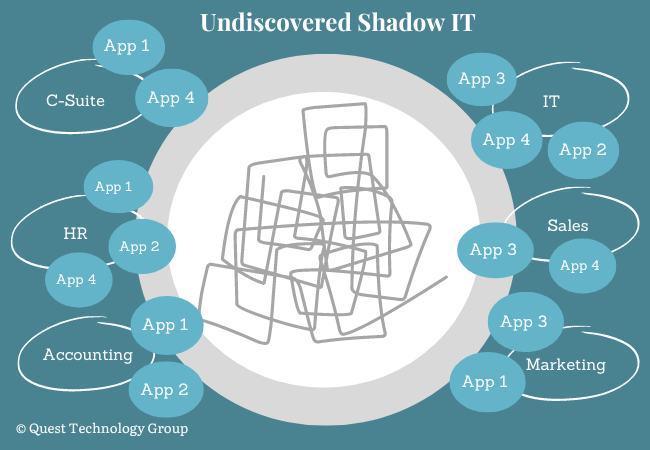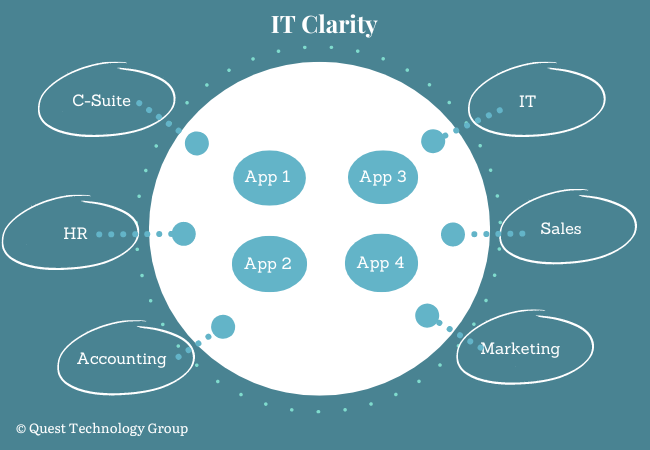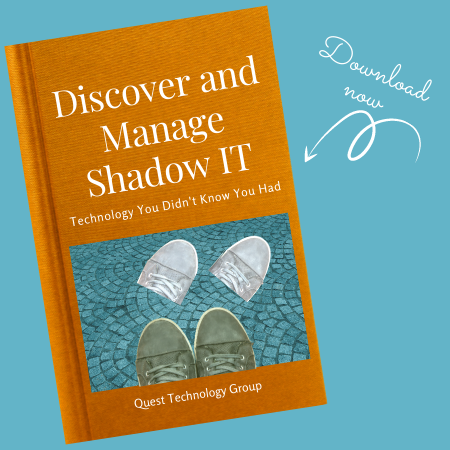Shadow IT Benefits and Risks

We've talked about shadow IT a lot, and it usually comes with a loud warning label. But there's a positive side to your underground technology that's overlooked. Why do people search for apps and tools when the company has made a substantial investment in the "best right" tools?
Not because folks don't like them -- whatever that means. Preschoolers don't like something. Grown up workers are specific and objective in their reasoning. The answer is simply your employees don't have the tools that help them do their best work. There's a disconnect between the get-it-done expectations and the resources to make it happen.
Every company, no matter the size, has a responsible technology decision-making process that's appropriate for them. But there are some shared truths across all companies.
The IT team thinks like technology people. They love technology more than business.
The folks who do the day-to-day work that keeps your company moving ahead think like businesspeople. They tolerate technology, but they love business more.
The yawning divide between users and IT is as old and entrenched as the dawn of business-meets-technology.
The users who rely on the tools and apps are often excluded from the decision-making process. IT is the de facto decider. And this is where the great divide happens.
So, what to do? Shadow IT isn't going to stop. The answer is to understand why it's happening and uncover the potential your users are handing to you.

Reduce the burden on your IT team to identify the tools your users need. It's not the best use of their IT skills and knowledge even if they don't tell you so.
Business users gain a sense of contribution because their needs are being heard and addressed.
Eliminate the dread of dealing with IT when a greater understanding between IT and users develops.
User-selected tools highlight roadblocks and inefficiencies in your current workflows. Efficiency and productivity improve with the right tools for each job.
How people do their work is often very different than leaders imagine. Tools tell the story.
Reveal security gaps and vulnerabilities that need to be addressed.
Create a clearer understanding of security and the unintended risks that unauthorized apps introduce. Users simply don't know the implications of their well-intended decisions.
Reduce silos when tools and data are shared across the company.
Uncover valuable data relationships that can be used in creative new ways.
Discover business folks who have the potential to develop their technology expertise. Everyone benefits when knowledge and expertise are encouraged.
Present opportunities for non-technical folks to acquire a deeper understanding of technology, how it works, and why the buying process is more complicated than it seems.
Help non-technical users understand why IT says "no".
Reduce the resistance to change that new technology often creates. When users participate in the decision process, they're eager to adopt the solution they have ownership in.
IT gains a broader understanding of business strategy and needs. They are able to integrate the most effective technology solutions into the business framework.
When IT people develop their business thinking, they are less biased toward programming languages, vendors, and technology platforms. Technology buying becomes a business-first mindset.

Give creative, innovative people the opportunity to share their enthusiasm.
Shadow IT users are problem solvers so let them put those natural skills to work.
Create a business-focused team to work in partnership with IT. This is valuable for companies of any size.
When you outsource your IT support to a third party, no matter how much you trust them, they don't know your business like you do. You have an obligation to take an active role in defining your business needs to ensure their services continually align.
Involve this new business technology team in all aspects of planning, evaluation, recommendation, and adoption across the company.
Eliminate the IT folks as the sole decision maker. Technology serves business not IT.
Implement a collaborative business-technology decision process that clearly communicates the role technology plays in your company.
Start with an inventory of all the tools, apps, and technology used in your company. You've heard us say this before because we know how valuable this step is. Everything that follows starts here.
Not because folks don't like them -- whatever that means. Preschoolers don't like something. Grown up workers are specific and objective in their reasoning. The answer is simply your employees don't have the tools that help them do their best work. There's a disconnect between the get-it-done expectations and the resources to make it happen.
How Does This Expectation-Tool Disconnect Lead to Shadow IT?
Every company, no matter the size, has a responsible technology decision-making process that's appropriate for them. But there are some shared truths across all companies.
So, what to do? Shadow IT isn't going to stop. The answer is to understand why it's happening and uncover the potential your users are handing to you.

Shadow IT Is an Undiscovered Decision-Making Tool
Managing Shadow IT Reduces Tech Bloat and Data Risks

7 Tips to Manage Shadow IT
When you outsource your IT support to a third party, no matter how much you trust them, they don't know your business like you do. You have an obligation to take an active role in defining your business needs to ensure their services continually align.
Thanks for Stopping By on Friday
Discover what other successful company leaders know.
Join our community of tech savvy business leaders. We share information, knowledge, tools, resources, and a connected community to help you and your business thrive.
 Linda Rolf is a lifelong curious learner who believes a knowledge-first approach builds valuable, lasting client relationships.
Linda Rolf is a lifelong curious learner who believes a knowledge-first approach builds valuable, lasting client relationships. She loves discovering the unexpected connections among technology, data, information, people and process. For more than four decades, Linda and Quest Technology Group have been their clients' trusted advisor and strategic partner.
Tags: Technology Strategy, Business Strategy

